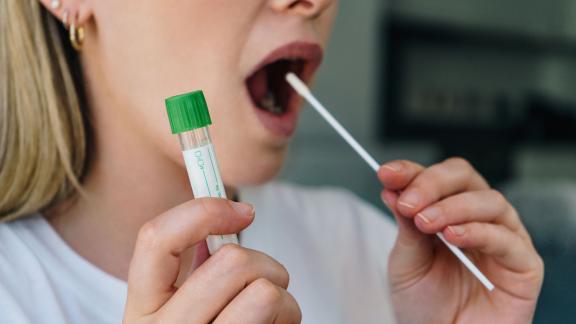Analysis: January release of NHS performance statistics

At a glance
- The latest performance statistics were released as COVID-19 hospital admissions plateau nationally. But the service is still under enormous pressure at the most challenging time of year with staff shortages (with COVID-19 absence passing the highest week from last winter, this week) and poor performance metrics.
- Significant challenges are shown in key monthly performance indicators such as record levels of 12-hour waits from decision-to-admit to admission in A&E (‘trolley waits’) and record low performance against the four-hour A&E attendance target and the two week/two month wait cancer standards (albeit with some caveats).
- The waiting list has risen until the end of November, but marginally compared to recent months with 6m (5,995,156) waiting for treatment compared to 5.98m in October. This is in part due to the 1.42m removals from the waiting list, the highest level of activity since November 2019.
COVID-19
COVID-19 admissions per day have flattened considerably across England, with a seven-day average of 2,010 patients admitted per day in England (data available up to 10 January), slightly down from 2,038 week on week. This is the first time this week-on-week figure has decreased since the start of December.
The turning point in admissions is also reflected in the regional picture, shown in the chart below, with the seven-day average of daily admissions in London now 18.7 per cent lower than one week ago. It is important to note that admissions rose week on week in other regions, such as the north east and Yorkshire where they have risen 15.2 per cent. However, this increase is significantly lower than the rises of over 100 per cent from seven days previously.
The number of COVID-19 patients in hospital beds is flattening too as would be expected (albeit more slowly), with this chart showing the biggest rises still happening in the north of England despite decreases in numbers in London:
Although we may be approaching, or just beyond, the peak of Omicron in London, there is still considerable pressure on the service at the toughest time of the year.
With staff absence high, discharge delays, patient flow issues, infection prevention control challenges, non-urgent surgery postponed and more, it is unsurprising that today’s statistics show performance continuing to decline and targets continuing to be missed, with patient safety at risk.
A&E performance
In December, performance against the four-hour target fell. The percentage of patients spending four hours or less in type 1 A&Es (major A&E departments that provide a consultant-led 24-hour service with full facilities for resuscitating patients) fell to 61.2 per cent, the lowest on record. The target is 95 per cent but this hasn’t been met in type 1 A&Es since 2012. This means that in December, over 440,000 patients had attendances in A&E that lasted longer than four hours from arrival to admission, transfer or discharge.
The fall in performance is shown against 2019 for context, with improved percentages during the pandemic when there were fewer attendances:
Also concerning is that 120,218 patients spent more than four hours from decision-to-admit to admission at A&Es (marginally down from 120,749 in the previous month, but total admissions were down by just under 7,000). 12,986 of these patients waited over 12 hours, up 22 per cent from last month and the highest it has ever been:
Waiting list
The waiting list has risen from 5.98m to 6m (5,995,156) as of the end of November. This has increased by over 100,000 patients in all of the last nine months, with this smaller rise partly due to the highest number of patients coming off the waiting list (1.42m) since January 2020. Many of these will be due to patients starting treatment, although a percentage will be administrative removals or patients no longer electing to have treatment. The number will also be higher, with validation removals taken into account.
1.68m patients meanwhile joined the waiting list, the highest since January 2020. This is similar to pre-pandemic levels (across 2019, an average month was 1.68m) meaning despite the increase we are not seeing the missing patients who didn’t present throughout the pandemic yet.
The number of 52-week waiters is 306,996, down from 312,665, while the number of 104-week waiters is 18,585 up from 16,225.
6,954 patients are due to rise over the 104-week threshold within four weeks. Knowing the pressure the service has been under in December and January, it is unlikely we will see large numbers of those long waiters coming off the waiting list in forthcoming data releases, despite planning guidance to eradicate 104-week waits by March 2022.
Cancer
In November, 77.4 per cent of patients were seen within two weeks of an urgent referral for suspected cancer, down from 81.3 per cent in October and meaning performance against the standard has declined in four consecutive months. The target is that following an urgent GP referral for suspected cancer, at least 93 per cent should be seen within two weeks. This has rarely been met over the last four years, and when it last was (May 2020) significantly fewer patients were seen (106,741).
The number of patients seen by a specialist however in November 2021 was 246,316, the highest ever. The record was set in March 2021 at 232,136; prior to the pandemic the number seen in a month had only been over 220,000 twice, but now this number has been above 220,000 in five of the last six months.
A similar pattern is visible in two-month waits from GP urgent referral to first treatment. This standard is 85 per cent of patients starting treatment within two months, but the last time this percentage was even over 80 per cent was in December 2018, with 67.5 per cent of patients meeting the standard in November 2021. Compared to two-week waits, the volume of treatment starts is slightly more in keeping with previous years:
One of the key caveats on both metrics from month to month, is that we know a significant number will have already been over the threshold of two weeks or two months coming into November, so a 100 per cent figure would not be a good sign as the metric is based on how many patients seen or treated were within the standard.
Discharge
On an average day in the week ending 2 January 2022, 11,795 inpatients no longer meeting the criteria to reside in hospital were not able to be discharged on the day out of an average 19,460 patients, up to 60.6 per cent from 58.3 per cent in the previous week.
This equates to an average day having 11,795 patients who were medically fit to be discharged, but 7,666 remaining in hospital. They now make up over 13 per cent of patients in NHS acute trusts.
90.6 per cent of patients who had been in hospital for more than three weeks and no longer met the criteria to reside in hospital could not be discharged, further emphasising pressure in other NHS services and the care sector.
Ambulance handovers
Challenges with discharging and patient flow then have a knock-on effect to the front door. In the week ending 9 January, there were 7,948 ambulance handover delays over 60 minutes, compared to 8,272 the previous week. This equates to 9.8 per cent of all ambulances arriving, with 81,135 arrivals in total (previous week saw 83,643 arrivals and 9.9 per cent were delayed over 60 minutes).
18,307 handovers were delayed by over 30 minutes (22.6 per cent of arrivals), not quite reaching the previous record of 19,503 delays set week ending 12 December 2021. For context, the record prior to this year was 18,251 week ending 5 January 2020.
Absence
In acute trusts, COVID-19 absence was up 28 per cent in the week ending 9 January, with 45,736 staff absent due to COVID-19 per day, up from 35,596 and now surpassing the levels of last winter. There are significant differences across the regions, with COVID-19 absences up 46 per cent in the north west and 41 per cent in the Midlands, compared to just 6 per cent in London.
Total absence per day was up to 88,516 on average compared to 80,295 in the previous week, with COVID-19 absences accounting for 52 per cent of this.
According to the NHS sickness absence data with absence reasons released up to August, the most reported cause for absence was mental health. 556,000 full time equivalent days were lost in August (27.8 per cent), which is concerning as mental health issues can have a significant impact on staff and their families, and also result in longer absence periods or high levels of presenteeism.
Mental health trusts themselves are also seeing a rapid rise in staff absences. With some reporting that the numbers are increasing from about 30-40 before Christmas to about 150 now. Workforce capacity was an issue before the pandemic, and while mental health trusts are managing despite staff absences, it is a very challenging situation, which will of course get worse if these numbers continue to rise. Often these patients are seriously ill and will need a bed. We also know that high levels of people on inpatient units also have COVID-19, which gives an additional challenge to mental health trusts at this time.
Staff absence is also having a significant impact on primary care, reducing the number of available clinicians for core activity and vaccination clinics, as well as admin and support staff. One primary care federation (groupings of practices) reported to us that over 30 per cent of their core team absent. Our members have also been reporting increased COVID-19 presentations in primary care.
How is the NHS performing?
View our analysis of the latest NHS performance figures for a rounded view of how healthcare services are coping under immense pressure.



